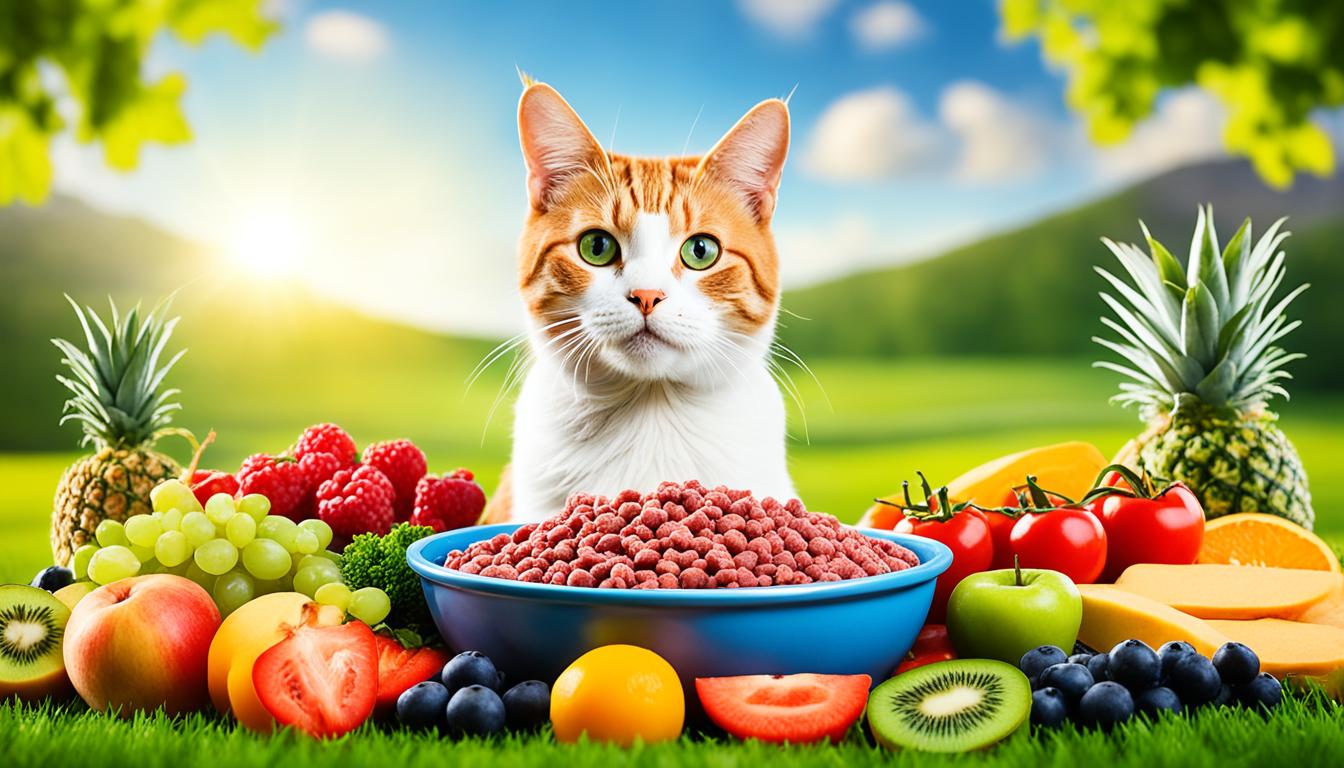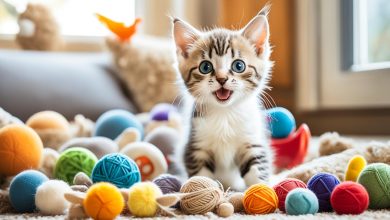Best Cat Food Choices for Healthy Feline Friends

Choosing the best cat food for your feline buddy is crucial. They need a diet high in meat-based proteins because they are obligate carnivores. They also require a well-balanced mixture of nutrients.
It’s wise to talk to your vet to make sure you pick the right food. Your cat’s needs are unique, and your vet can offer guidance. Aim for cat food that’s balanced and high in protein.
Below are some top cat food choices that follow AAFCO (Association of American Feed Control Officials) guidelines.
Key Takeaways:
- Choose cat food that has meat and meat by-products listed as the first ingredients.
- Consult with your veterinarian to find a cat food that is nutritionally balanced for your cat’s needs.
- Consider trusted cat food brands that meet the regulations set by the AAFCO.
- Look for cat food options that provide a mix of proteins, carbohydrates, fats, vitamins, and minerals.
- Remember that every cat is unique, so finding the right cat food may require some trial and error.
The Pros And Cons Of Different Types Of Cat Food
Cats need special food, and there are three main kinds: dry, wet, and fresh. Each one has good and bad points. It’s key to think about what your cat likes and needs before choosing.
Dry Cat Food (Kibble)
Kibble is easy to use and usually costs less. It lasts a long time, so storing it is simple. But, it often has lots of carbs, which might not suit every cat. Choose kibble with quality protein and a balanced diet for your cat.
Wet Cat Food (Canned Food)
Wet food has lots of moisture and meat protein, which is good for cats. It’s like their natural prey, helping them stay hydrated. Yet, it’s pricier than dry food and doesn’t last as long once it’s open.
Fresh Cat Food
Fresh food is top-notch for your cat’s diet. It uses raw meats and fats, plus it’s full of water. This food is closest to what cats eat in the wild. It’s the priciest and might take time for cats to get used to.
Here’s a quick look at the pros and cons of each cat food type:
| Type of Cat Food | Pros | Cons |
|---|---|---|
| Dry Cat Food (Kibble) | Convenient, affordable, long shelf life | Higher in carbohydrates |
| Wet Cat Food (Canned Food) | High moisture content, animal-based protein sources | More expensive, shorter shelf life once opened |
| Fresh Cat Food | Unprocessed ingredients, high water content | Expensive, challenging to introduce to cats |
Choosing the right food for your cat depends on their age, health, and what they like. Talk to your vet to find the best option for your cat.
Understanding Feline Nutritional Requirements
Cats need special nutrients to stay healthy and happy. It’s key to give them a balanced diet. This keeps them in top shape.
Water is a must-have for cats. They don’t get thirsty like other animals. So, they should always have fresh water. It helps their digestion, kidneys, and overall well-being.
Cats also need lots of protein since they are strict meat-eaters. This protein helps them build muscle, repair tissue, and keep their immune system strong.
Omega-3 and omega-6 are vital fats for cats. They keep the skin and fur healthy. These fats also help fight inflammation and boost brain health.
Vitamins and minerals are also essential. They help with bone strength, fight off illness, and give energy.
To ensure your cat stays healthy, choose a quality cat food. It should have the right mix of protein, fats, vitamins, and minerals. Talk to your vet to figure out what your cat specifically needs. They can help pick the best food for your pet.
FAQ
What should I look for in the best cat food choices?
What are the different types of cat food available?
What are the pros and cons of each type of cat food?
What are the nutritional requirements for cats?
Source Links
- https://cats.com/bff-best-feline-friend-cat-food-review
- https://www.nbcnews.com/select/shopping/best-cat-food-ncna1235804
- https://www.beltonvetclinic.com/services/cats/feline-nutrition-cat-food




